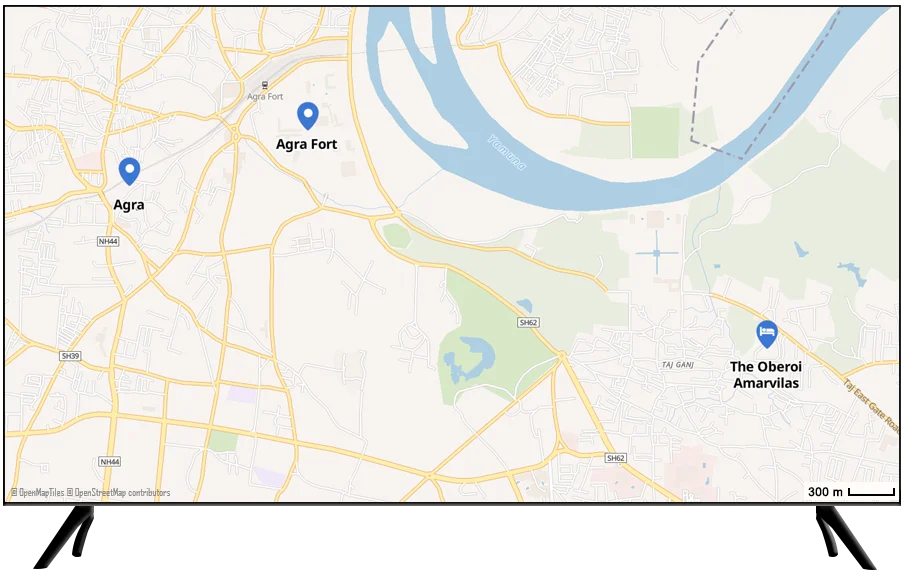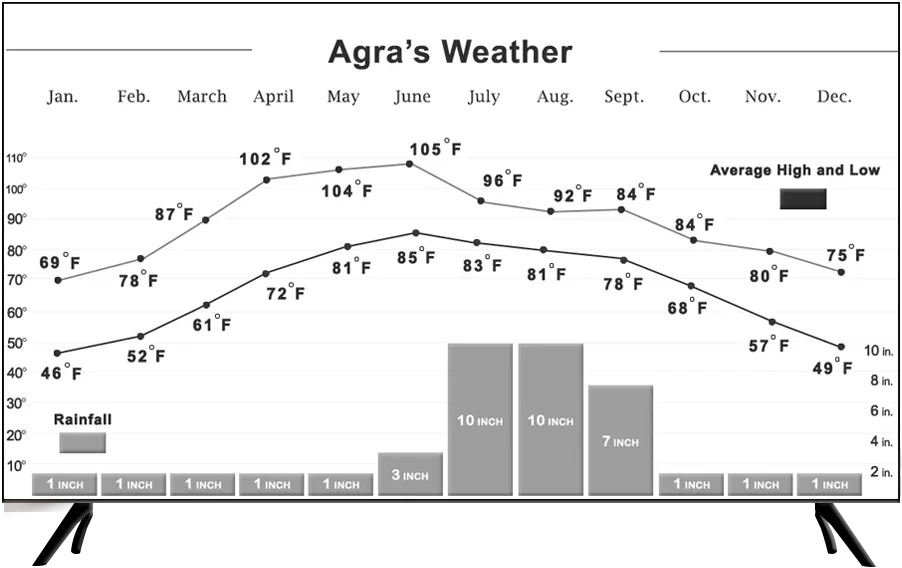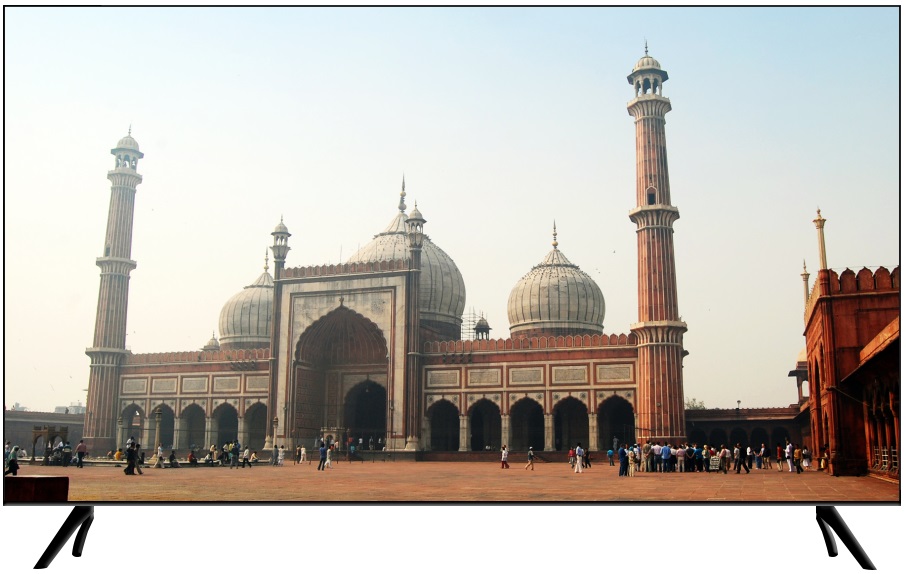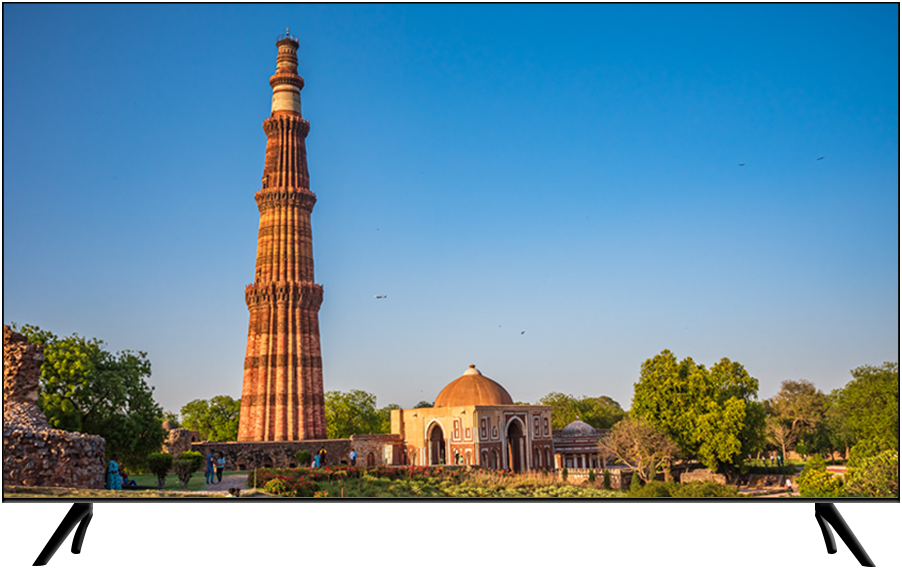



Day 4. Delhi
Overnight – The Oberoi Amarvilas
For breakfast this morning you will be served fresh Chole Bhature, among the most popular foods in Delhi and North India, as well as a street food staple. As always, a large selection of Indian and western options at the buffet, including scores of made to order delights, will also be available. Chole is a term used for the three different variety of chickpeas found in India, but you will dine on this day on a thick traditional chickpea dish that is amazingly delicious, and Bhaturas are a puffy fried bread made of leavened flour. These are eaten by locals for breakfast and lunch and are a routine part of the standard breakfast offerings at your hotels. There are many accompaniments for Chole Bhature, with the primary one’s being traditional Indian achaars (pickles), which are small pieces of vegetables and fruits, preserved for weeks or longer in brine or vinegar, along with various Indian spices. Chopped onions are another common accompaniment.
Your first destination today is the Jama Masjid (1650 A.D.) in Old Delhi, the largest mosque in India.
The Masjid is a magnificent example of Mughal architecture and is constructed of red sandstone and white marble. It is an active place of worship and its courtyard can hold 25,000 worshippers. Bare legs and shoulders are not permitted inside the mosque and we include rented sarongs and scarves from the vendors at the entrance.
One of your most enduring memories of India will be your next experience as you enjoy a walk through the ancient Chandni Chowk Bazaar, home to the world’s largest spice market. The cacophony of sounds which have echoed through the centuries, the cries of hawkers and the animated bargaining, along with the incredible colors and the diverse smells emanating from the street food stalls and spice markets combine to make for an experience that is unique to this ancient bazaar. An option to experience a cycle-rickshaw through the bazaar is available for those interested in it. Next you will drive around the 75-foot tall and 1.6-mile-long sandstone walls of the Red Fort, another UNESCO World Heritage Site. You can ask your Tour Director Guide to include a visit inside the Fort – it is not standard on our tour for two reasons – there are some similarities to the Agra Fort which you will visit, and quite a large part of this fortified city is currently occupied by the Indian Army and off limits to visitors. The Red Fort was the seat of the Mughal Empire for more than two hundred and fifty years. Both the Red Fort and the Jama Masjid were built by Shah Jahan, the emperor who created the Taj Mahal.
From Old Delhi you will head back to central Delhi and the Indian Accent restaurant at the Lodhi Hotel for a late lunch. This is one of three worldwide Indian Accent restaurants (the other two are among the top-rated Indian restaurants in London and New York) and its menu combines traditional Indian flavors with innovative global ingredients and cooking techniques to create an unmatched dining experience – we feel that the original branch at Delhi serves the best food when compared to the other two. Indian Accent has been awarded an impressive number of ‘Best Indian Restaurant in India’ awards from the most reputable publications over the last 8 years. The restaurants founder chef, Mr. Manish Mehrotra, is similarly the recipient of more top chef awards than anyone in India. You will select from a choice between vegetarian and non-vegetarian six course chef’s tasting menus. You will be driven back to your hotel in the middle of the afternoon.
We recommend you retire early as your departure will be slightly early on the following morning. You are on your own if you want to eat dinner tonight and we recommend a light meal at the excellent 360° multicuisine restaurant, or one of your hotel’s other fine dining restaurants. This evening, if not earlier, you will select your breakfast preferences for the following morning as you will be eating the meal on your short train journey to Agra.
For breakfast this morning you will be served fresh Chole Bhature, among the most popular foods in Delhi and North India, as well as a street food staple. As always, a large selection of Indian and western options at the buffet, including scores of made to order delights, will also be available. Chole is a term used for the three different variety of chickpeas found in India, but you will dine on this day on a thick traditional chickpea dish that is amazingly delicious, and Bhaturas are a puffy fried bread made of leavened flour. These are eaten by locals for breakfast and lunch and are a routine part of the standard breakfast offerings at your hotels. There are many accompaniments for Chole Bhature, with the primary one’s being traditional Indian achaars (pickles), which are small pieces of vegetables and fruits, preserved for weeks or longer in brine or vinegar, along with various Indian spices. Chopped onions are another common accompaniment.
Your first destination today is the Jama Masjid (1650 A.D.) in Old Delhi, the largest mosque in India.
The Masjid is a magnificent example of Mughal architecture and is constructed of red sandstone and white marble. It is an active place of worship and its courtyard can hold 25,000 worshippers. Bare legs and shoulders are not permitted inside the mosque and we include rented sarongs and scarves from the vendors at the entrance.
One of your most enduring memories of India will be your next experience as you enjoy a walk through the ancient Chandni Chowk Bazaar, home to the world’s largest spice market. The cacophony of sounds which have echoed through the centuries, the cries of hawkers and the animated bargaining, along with the incredible colors and the diverse smells emanating from the street food stalls and spice markets combine to make for an experience that is unique to this ancient bazaar. An option to experience a cycle-rickshaw through the bazaar is available for those interested in it. Next you will drive around the 75-foot tall and 1.6-mile-long sandstone walls of the Red Fort, another UNESCO World Heritage Site. You can ask your Tour Director Guide to include a visit inside the Fort – it is not standard on our tour for two reasons – there are some similarities to the Agra Fort which you will visit, and quite a large part of this fortified city is currently occupied by the Indian Army and off limits to visitors. The Red Fort was the seat of the Mughal Empire for more than two hundred and fifty years. Both the Red Fort and the Jama Masjid were built by Shah Jahan, the emperor who created the Taj Mahal.
From Old Delhi you will head back to central Delhi and the Indian Accent restaurant at the Lodhi Hotel for a late lunch. This is one of three worldwide Indian Accent restaurants (the other two are among the top-rated Indian restaurants in London and New York) and its menu combines traditional Indian flavors with innovative global ingredients and cooking techniques to create an unmatched dining experience – we feel that the original branch at Delhi serves the best food when compared to the other two. Indian Accent has been awarded an impressive number of ‘Best Indian Restaurant in India’ awards from the most reputable publications over the last 8 years. The restaurants founder chef, Mr. Manish Mehrotra, is similarly the recipient of more top chef awards than anyone in India. You will select from a choice between vegetarian and non-vegetarian six course chef’s tasting menus. You will be driven back to your hotel in the middle of the afternoon.
We recommend you retire early as your departure will be slightly early on the following morning. You are on your own if you want to eat dinner tonight and we recommend a light meal at the excellent 360° multicuisine restaurant, or one of your hotel’s other fine dining restaurants. This evening, if not earlier, you will select your breakfast preferences for the following morning as you will be eating the meal on your short train journey to Agra.

